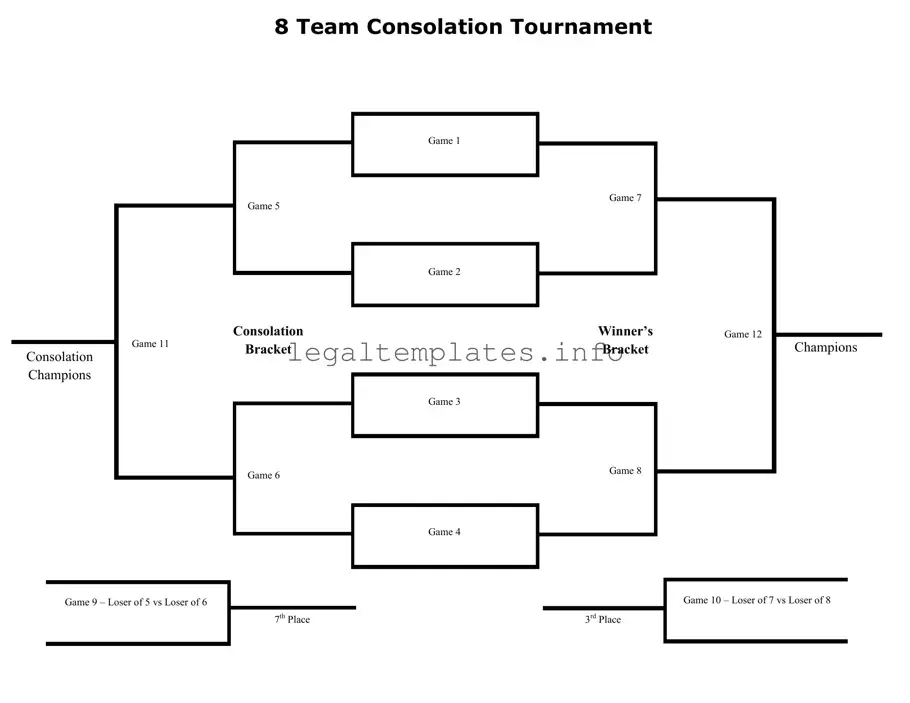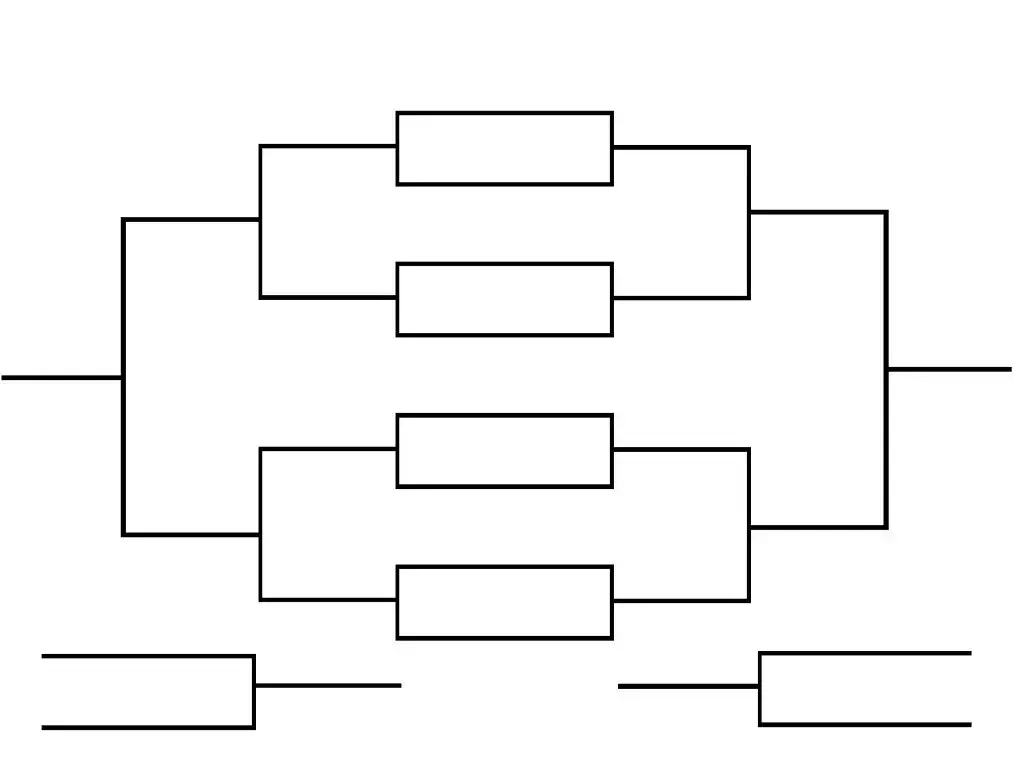The Tournament Consolation Bracket form is conceptually similar to a playoff seeding chart in many competitive sports leagues. Such a chart likewise outlines the path teams or individuals may take to reach the championship, based on their performance in the regular season. The main difference is that a playoff seeding chart typically does not provide a path for defeated teams to continue competing for lower positions, as a consolation bracket does. The primary focus here is on delineating a structured sequence of games, where outcomes directly influence subsequent matches.
Another document akin to the Tournament Consolation Bracket form is an elimination-round bracket used in spelling bees or debate tournaments. In these educational competitions, participants are gradually eliminated based on performance in each round, similar to how teams are eliminated in various stages of the Tournament Consolation Bracket. However, unlike most spelling bees or debate tournament formats, the consolation bracket offers a "second chance" for competitors to achieve a position even after an initial loss.
A school's academic course flowchart can also resemble the organizational structure of a Tournament Consolation Bracket. Such flowcharts map out prerequisite courses and suggest sequences for completing a program of study. Like the consolation bracket, they lay out a pathway to success, in this case, graduation, with certain steps or courses following others in a logical sequence. The difference lies in the context and goals—academic achievement as opposed to sports competition.
An organizational hierarchy chart within a company or institution shares similarities with the Tournament Consolation Bracket form by illustrating the structure of authority and relationships between different positions within the organization. Both kinds of documents serve to navigate and understand a system—be it a tournament or an organization—clearly laying out positions and pathways of progression. However, an organizational chart tends to be more static, representing roles and responsibilities, unlike the dynamic progression of games in a tournament.
An event planning checklist is another document related to the Tournament Consolation Bracket form. This checklist guides organizers through each step of planning and executing an event, ensuring no detail is overlooked. Similar to how the consolation bracket documents the sequence of games and their outcomes, an event planning checklist outlines the chronological order in which tasks should be completed for efficient organization. The focus here shifts from organizing competitive games to managing logistical and preparational aspects of event planning.
The strategic plan of a business shares a strategic resemblance with the Tournament Consolation Bracket form. A strategic plan outlines the goals of a business and the steps needed to achieve them, often including contingency plans. Similarly, the Tournament Consolation Bracket organizes teams' progressions and potential routes to the final positions, accounting for both victories and losses. While a strategic plan focuses on business success and growth, the consolation bracket aims at structuring competition in a way that allows teams to navigate toward concluding ranks, including recovery strategies after a loss.
Last but not least, the concept of a story arc in narrative fiction mirrors the progression seen in the Tournament Consolation Bracket. A story arc charts the development and transformation of characters or plots through various challenges and resolutions leading to a climax. In parallel, the consolation bracket maps out the journey teams undergo through victories and defeats, aiming for the ultimate goal of winning the consolation championship. The comparison lies in the structured progression toward an endpoint, albeit in different domains: one in storytelling, the other in competitive sports.

